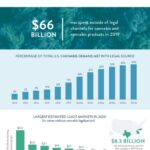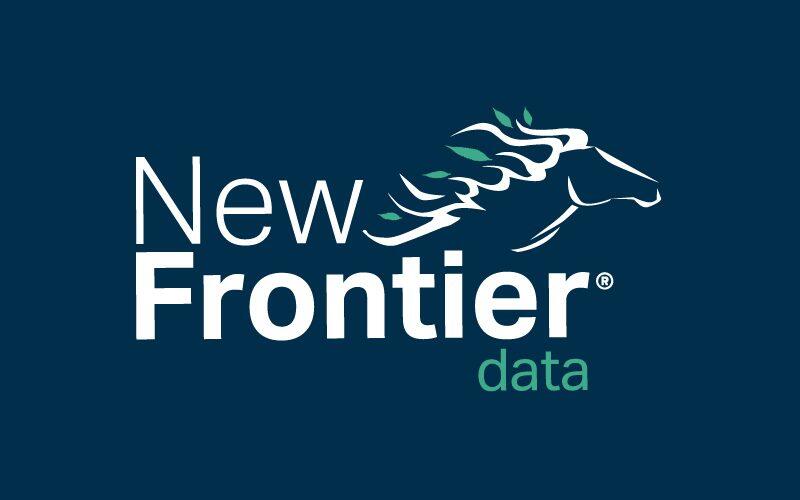Positive Erosion: How the Legal Cannabis Industry’s Growth Undermines Illicit Markets

66% of American Adults Support U.S. Federal Cannabis Legalization
October 9, 2020
Legal Cannabis Industry Growth
October 13, 2020By Kacey Morrissey, Senior Director of Industry Analytics, and J.J. McCoy, Senior Managing Editor, New Frontier Data
An unanticipated effect of the COVID-19 pandemic has been the growth acceleration of legal cannabis markets in those states which have activated both medical and adult-use sales.
In 2019, the total combined illicit market for cannabis in the United States was an estimated $66 billion, which through the growth of currently legal markets is projected to shrink some $4 billion by 2022. Through higher sales and increased patient participation in medical-only markets, the second quarter of 2020 saw surging patient counts in medical markets – particularly in those having 1) lower barriers to entry (i.e., less restrictive qualification requirements), and 2) more accessible markets (i.e., greater density among dispensaries).
While population growth and rising usage rates will lead to a natural increase in the size of the total addressable market for cannabis, the illicit market will continue to serve the majority of the demand since most consumers in the U.S. live either in medical-only markets or states without legalized cannabis.
Meanwhile, though competitive forces and economies of scale will eventually drive down both wholesale and retail prices, increasing consumer demand should propel sustained growth in total legal revenues through 2025.
Among states without any legalized medical or adult-use cannabis sales, Texas, North Carolina, and Georgia represent the three largest illicit markets, worth a combined $8.3 billion in such total sales in 2019. Without action to legalize cannabis, those three states are projected to combine for about $8.6 billion in illicit sales this year, rising to an estimated $9.8 billion by 2025.
However, the 34 existing legal medical states and 11 existing legal adult-use states collectively are projected to capture some of the growing demand, and erode some of the growth of the national illicit market. In 2019, 17% of total U.S. cannabis sales were estimated to have been legal, but New Frontier Data estimates that by 2025 more than one-third (34%) of total annual cannabis demand will be met by legal purchases in regulated marketplaces.
Key factors influencing how much and how quickly that a legal market can capture demand include:
- Flexibility of regulatory structures to adapt to changing market dynamics;
- Market implementation timelines;
- Allowances for diverse product types;
- Taxes and retail prices;
- Product access (largely determined by the number of licenses issued by a state for cultivars and dispensaries, as well as allowances for delivery services); and
- Barriers to patient participation (largely determined by qualifying conditions in medical states).When individual states impose strict market limitations that limit access or experience delays, the illicit market can recapture those consumers. In California, for example, just 38% of in-state demand will likely be met by legal regulated sources during 2020; that share is projected to grow to 46% by 2025. Meanwhile, other recently activated regulated adult-use markets like Massachusetts are expected to convert nearly three-quarters of all cannabis sales to the legal market.
With demand for cannabis deeply entrenched, illicit markets capture significant untaxed revenue. Though it has been over 80 years since the first federal U.S. laws banning cannabis, the National Survey on Drug Use & Health reports that more than 1 in 10 Americans regularly consume cannabis, with the percentage increasing steadily over the past two decades.
With an estimated 264 million cannabis consumers globally, spending nearly $350 billion annually, not only has prohibition been ineffective in eliminating cannabis use, but governments stand to see significant revenues from effective taxation and regulation.




